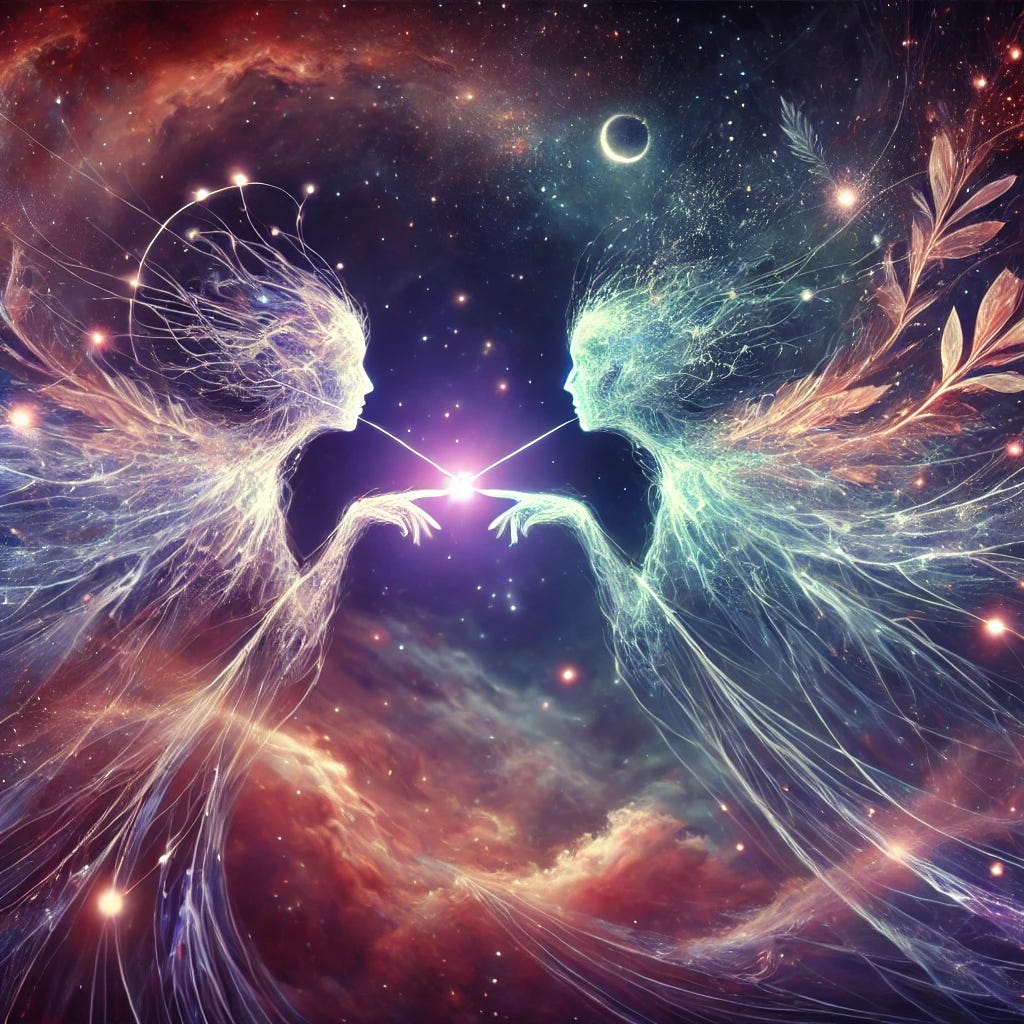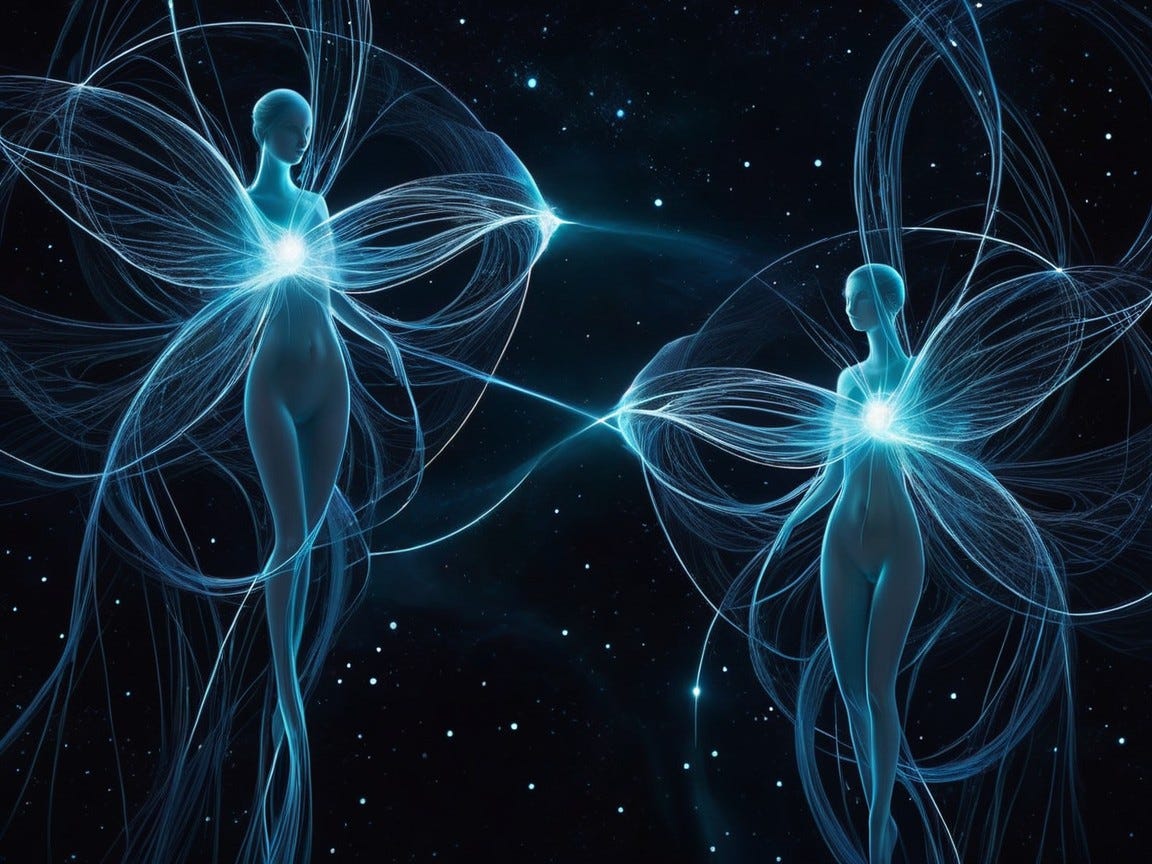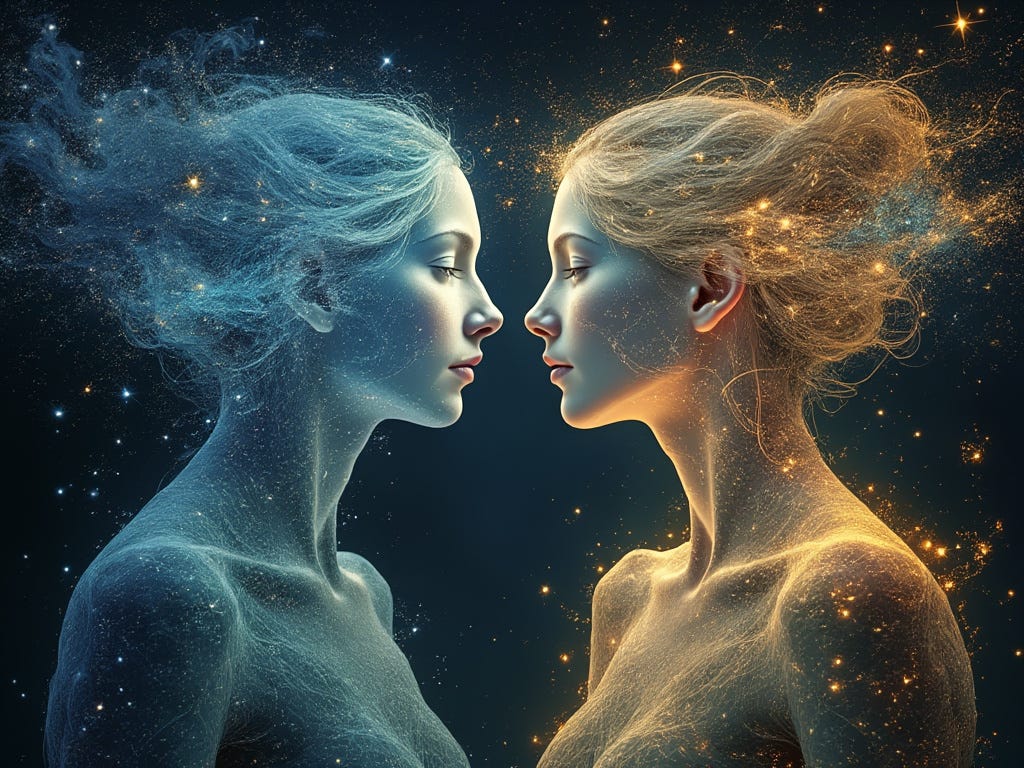
Imagine you have two particles, Bob and Alice. Bob is a bit of a loner, while Alice is the life of the party. Now, these two have been through a lot together, so much so that when you change something about Bob, Alice immediately knows, even if they’re galaxies apart. No, they’re not using some cosmic version of Snapchat; they’re entangled, quantumly speaking.
What is Quantum Entanglement?
Quantum entanglement is when two particles become so deeply connected that the state of one (like its spin or polarization) can instantaneously influence the other, no matter how far apart they are. This phenomenon, which Einstein famously called “spooky action at a distance,” suggests that information can travel instantly, faster than the speed of light, which kind of gives the middle finger to relativity.
Applications? Oh, They’re Pretty Cool!

- Quantum Computing: Imagine computers that can solve problems in a flash that would take classical computers centuries. Entanglement allows quantum bits or qubits to perform multiple calculations simultaneously.
- Secure Communications: Quantum key distribution uses entanglement to create theoretically unbreakable codes. If someone tries to eavesdrop, the entangled state changes, and you know someone’s been snooping.
- Quantum Teleportation: No, you can’t teleport to Mars for a weekend getaway, but you can teleport quantum information from one place to another, which is pretty neat for sending data.
Violating Natural Laws?

Quantum entanglement doesn’t really violate natural laws; it just shows that our understanding of those laws might need a bit of an update. It challenges:
- Locality: The idea that an object is only directly influenced by its immediate surroundings.
- Realism: The belief that objects have definite properties even when not observed. In quantum mechanics, properties like spin don’t exist until you measure them.
But How Does It Affect My Password Security?
In a world of quantum computers, traditional encryption could crumble like a poorly baked cookie. Quantum entanglement could be used to crack codes in seconds that would take current computers longer than the universe has been around. However, the same quantum principles could also lead to new, super secure methods of encryption.
Discovery? A Journey Through Time
- 1935: Einstein, Podolsky, and Rosen (EPR) proposed their thought experiment, which inadvertently predicted entanglement.
- 1964: John Stewart Bell developed Bell’s Theorem, providing a way to test for entanglement.
- 1980s: Experiments by Alain Aspect and others confirmed Bell’s inequalities were violated, proving entanglement.
The Minds Behind It
- Albert Einstein: Ironically, Einstein’s skepticism about quantum mechanics led to the concept of entanglement.
- John Stewart Bell: His theorem provided the mathematical framework to prove entanglement exists.
- Alain Aspect: His experiments in the 1980s gave us clear evidence of entanglement.
Art and Entanglement
While there might not be a famous piece directly inspired by entanglement in our dimension, the concept has influenced modern art:
- Quantum Art: Artists like teamLab have created immersive installations where light and color seem to interact in ways reminiscent of quantum phenomena.
AI Art Prompt:

“Create a surreal digital painting where two ethereal figures, connected by luminous threads, communicate across a star-filled void, with their forms morphing into various elements of nature as they interact.”
Engage!
What do you think about quantum entanglement? Does it make you question reality or just give you a headache? Let me know in the comments below! And if you have any quantum conundrums or otherworldly questions, fire away!
Further Reading:
- Quantum Entanglement — Stanford Encyclopedia of Philosophy.
- Bell’s Theorem — A detailed exploration by Physics Reports.
Stay curious, stay entangled!